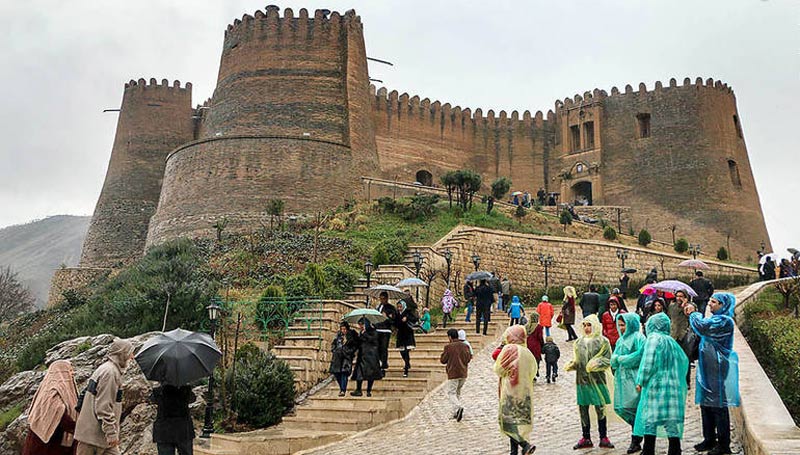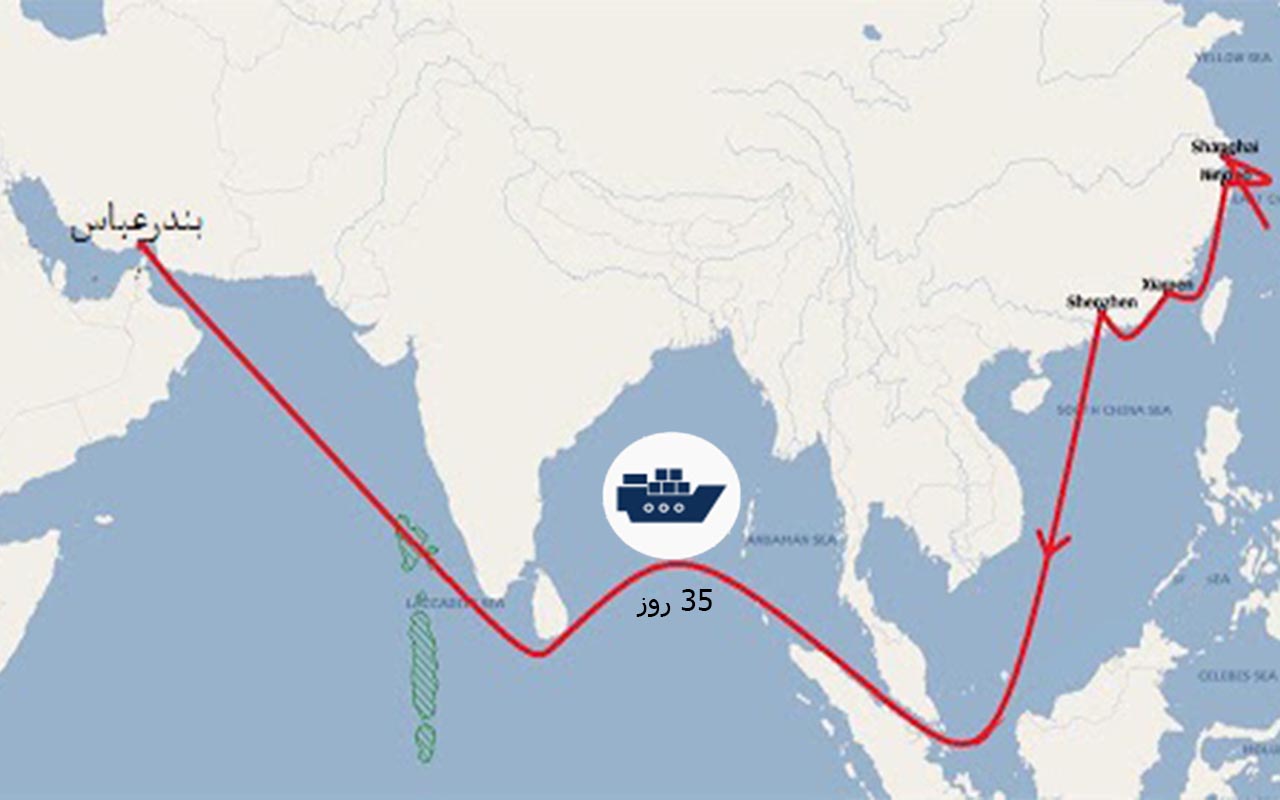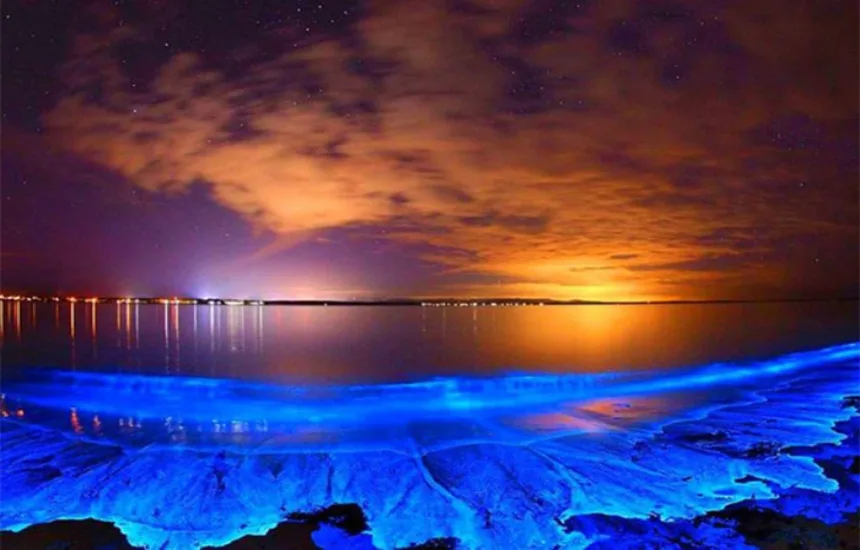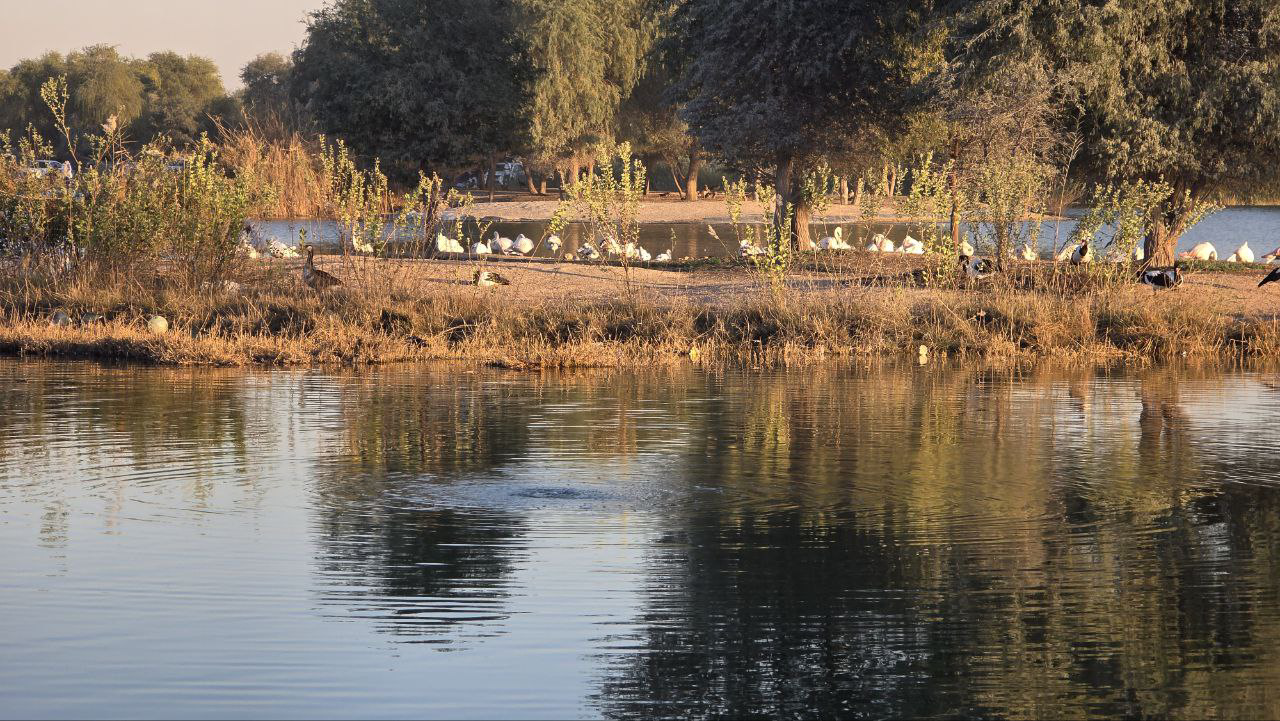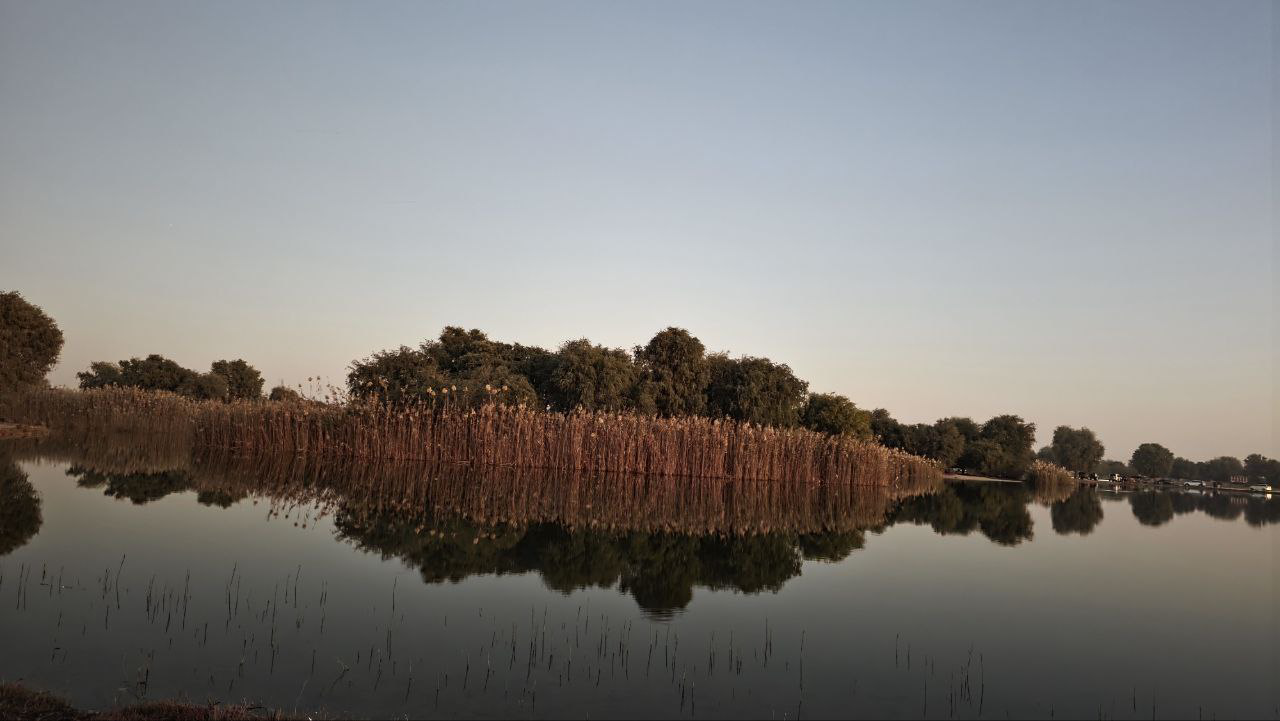Falak al-Aflak Castle: A Glimpse into Lorestan’s Past
Falah al-Aflak Castle is one of the prominent historical landmarks remaining from ancient Iran. This ancient castle is considered one of the most famous attractions in Khorramabad, located in the center of the city. The province of Lorestan has been historically significant due to its abundant springs, flowing waters, and lush nature, attracting the attention of various Iranian rulers. Falah al-Aflak Castle served as a residence for rulers from different eras, including the Sassanians, Albooyeh, Safavids, and Qajars.
Secrets of Falah al-Aflak Castle have intrigued archaeologists over time. The construction of this ancient castle on mountainous rocks and the presence of a deep well in the castle’s courtyard are among the noteworthy aspects studied by experts. If you’re interested in getting acquainted with this ancient castle in Lorestan province, stay with us for more.
What you need to know about Falah al-Aflak Castle:
Where is Falah al-Aflak Castle?
Inside Falah al-Aflak Castle
Architecture of Falah al-Aflak Castle
Secrets of Falah al-Aflak Castle
Photos of Falah al-Aflak Castle
Museum of Falah al-Aflak Castle
Falah al-Aflak Castle’s Location:
Falah al-Aflak Castle is situated on a high and ancient hill in the center of Khorramabad. In historical texts, it is sometimes referred to as “Dezh Shapur Khast.” The construction of the initial structure dates back to the Sassanian period, but various additions have been made over time. Notably, during the Safavid and Qajar eras, significant alterations were introduced to the castle.
Falah al-Aflak Castle’s Surroundings:
The castle is located near the Zagros Mountains in Lorestan. Its strategic position made it a crucial passageway between the central plains of Iran and the southern and western regions of the country. The surrounding green plains, lively springs, and excellent climate distinguished the location of Falah al-Aflak Castle. The hill on which the castle is built is surrounded by two mountain ranges, forming a protective barrier around the castle.
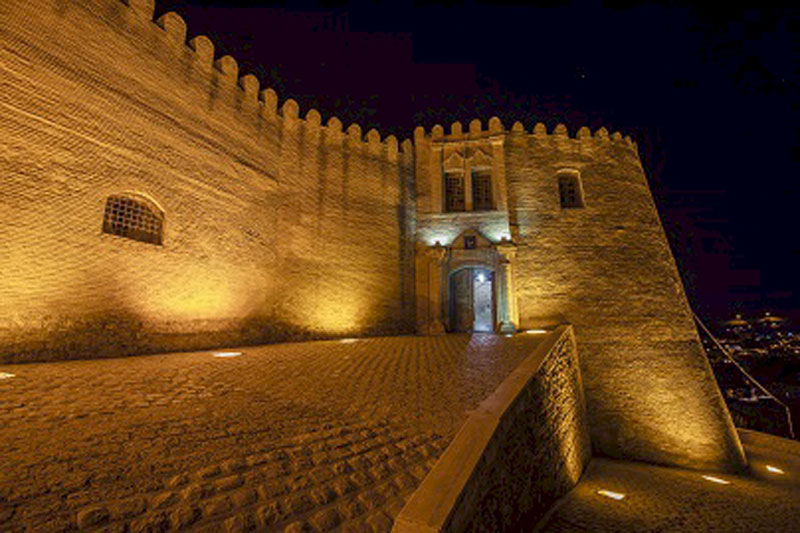
Architecture of Falah al-Aflak Castle:
The castle is constructed using bricks, clay, stones, and mortar. One of the intriguing features is the presence of a very deep well and an emergency escape route in the castle’s second courtyard. Throughout history, Falah al-Aflak Castle has served various purposes, including a governmental center, military garrison, prison, royal treasury, and other military and political functions. Presently, the castle has undergone a change in function, transforming into a museum for archaeology, ethnography, and historical artifact restoration laboratories.
Names of Falah al-Aflak Castle:
Historical texts from different periods have referred to the castle by various names such as “Dezh Siah” (Black Fortress), “Kakh-e Atabakan” (Atabakan Palace), “Qaleh Bala” (High Castle), “Qaleh Sefid” (White Castle), and “Qaleh Khorramabad” (Khorramabad Castle). The newest name, Falah al-Aflak, was given after the construction of a room with the same name atop the tallest tower during the Qajar period.
Address of Falah al-Aflak Castle:
Lorestan Province, Khorramabad, Imam Khomeini Street (12 Towers), Falah al-Aflak Castle.
Inside Falak al-Aflak Castle
The entrance of Falak al-Aflak Castle is located in the northwest section of the compound, adorned with two brick columns and a vaulted porch. The architectural style of this section of the castle belongs to the Qajar period. Guard rooms, entrance halls, and the first tower of Falak al-Aflak Castle are situated in this section. This building was the only two-story structure in the castle, overlooking the castle entrance from the outside. It is referred to as the “Golestan Mansion,” housing internal and external spaces, a bathhouse, a mosque, an arsenal, and a council chamber.
Parts of the structures inside Falak al-Aflak Castle have been lost over time due to the actions of different rulers, with the destruction primarily caused by the use of the materials employed in these buildings. Upon passing through the entrance and the octagonal area, you reach the first courtyard of the castle. In the southern part of the first courtyard, a row of buildings is visible, constructed after the demolition of the second tower. Following these structures, there is a rectangular building with six columns supporting a vaulted roof. The mysterious well of Falak al-Aflak Castle is located in this courtyard, at the northern end of the western section. A row of buildings is constructed between this courtyard and the second courtyard, featuring two separate entrances. The architectural style of this section belongs to the Qajar and early Pahlavi periods. Other sections of the first courtyard of Falak al-Aflak Castle include a bathhouse, a water reservoir, and sewage disposal tunnels.
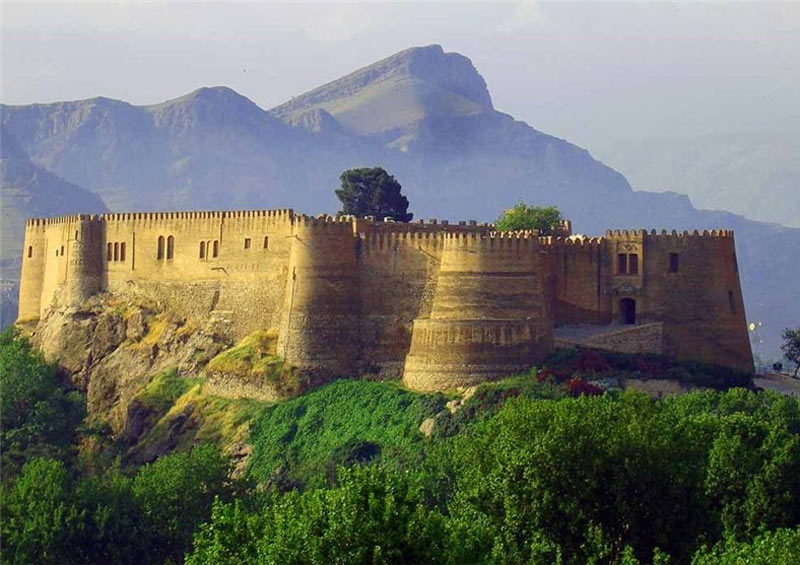
Upon entering the rooms and passing through to the second courtyard, you’ll notice that the northern and southern parts of the second courtyard have a similar plan. The rooms in these sections are oriented north-south. Below the rooms in the southern section, small spaces with communication tunnels are embedded, likely used for emergency escapes in the past. In the eastern part of the second courtyard, rooms with four-part domes are situated.
Throughout the towers, rooms, and walls of Falak al-Aflak Castle, significant changes have occurred over time. The reconstruction of towers and battlements has resulted in a considerable difference between their current appearance and their original form. The only tower that has undergone minimal changes is the brick tower, adorned with brick and terracotta decorations on its walls. Exploring the interior of Falak al-Aflak Castle allows you to witness a variety of architectural styles from different historical periods.
Architecture of Falak al-Aflak Castle
Photographer and image source: Saeed Afkhami from the Islamic Republic of Iran Broadcasting (IRIB) news agency
In the construction of ancient Iranian castles, the design of suitable fortifications in the building’s architecture held great importance. Falak al-Aflak Castle has been used as a government fortress in various historical periods, and thus, defensive walls cover the southeast shoreline of the river, creating a protective perimeter of approximately 10 hectares around the castle. The Khorramabad River also serves as a protective moat in the southeast part of Falak al-Aflak Castle.
The overall shape of Falak al-Aflak Castle is a regular pentagon, and its towers have different dimensions. The material of the castle walls is limestone, preserving moisture within. The castle also features underground pathways for water drainage. Wooden cladding has been used for added protection on the castle walls. No gypsum or tile work decorations are found in any part of Falak al-Aflak Castle. Simple brickwork is visible on all surfaces and facades, with raised and diamond-shaped brickwork particularly notable on the western wall of the first courtyard. The walls of Falak al-Aflak Castle are inclined inward from bottom to top to prevent potential settling. The walls have two edges and significant thickness.

There is limited information about the materials used in the construction of Falak al-Aflak Castle, but large stone pieces can be observed in the walls. Over historical periods, walls have been covered with clay for additional protection. The construction of the towers also involved the use of mud bricks and clay, later repaired with bricks. Unfortunately, significant parts of this historic castle have been lost over time as various rulers dismantled them for materials used in their own projects.
Secrets of Falak al-Aflak Castle
Falak al-Aflak Castle is one of the most mysterious and enigmatic ancient structures that has survived from various historical periods. Archaeological excavations and studies by experts over time have shed light on some of the secrets of this castle. The most mysterious part of this castle is considered to be its well, and in recent years, the Cultural Heritage Organization has conducted geological, archaeological, hydrological, and architectural studies with specialists to explore it.
Researchers have encountered artifacts and signs in Falak al-Aflak Castle that strengthen the possibility of an underlying aqueduct. Although this hypothesis has not been proven conclusively, it cannot be entirely dismissed. The well of this castle is intriguing, dug vertically with a depth exceeding 40 and a half meters, located in the northeast of the first courtyard, behind the tall vaulted facade. The current source of water in this well is attributed to atmospheric precipitation, but the existence of an aqueduct is also plausible.
Given the limited geological knowledge in ancient times, determining and calculating the location and desired depth of the well is an interesting aspect for researchers. It seems that the proximity of Falak al-Aflak Castle to the Golestan spring has been the reason for digging the well in this part of the castle. The mouth of the well is wider up to a depth of 15 meters and gradually reduces in diameter.
There are 150 cubic holes in the walls of the well in a regular pattern, designed to facilitate ascending and descending the well. The age of the pottery and mortar used in the stone-lined walls of the well dates back to the pre-Sasanian period. Water flow in the bottom of this well is still present, and its water is potable.
At the depth of the well of Falak al-Aflak Castle, there is still drinkable water
One of the most important considerations in building ancient castles was providing suitable access to drinking water sources for the castle’s residents. Digging a well for access to drinkable water during times of war when access to springs and rivers for water retrieval was not possible was a chief concern for architects. Mountainous regions, due to the presence of rocks and rugged, rocky terrain, posed more challenges for builders. The well of Falak al-Aflak Castle is one of the few hand-dug wells in limestone rocks that fully supplied the water needs of its inhabitants. Currently, this well is one of the most attractive parts of Falak al-Aflak Castle for tourists. In a part of the castle courtyard, under small rooms, they have discovered a tunnel that attracts the attention of experts. It seems that this path was used for emergency escapes.
Falak al-Aflak Castle Museum
Falak al-Aflak Castle Museum is the only ethnology museum in Lorestan Province. It commenced its activities during the Pahlavi era, showcasing valuable historical artifacts such as handwritten manuscripts. A visit to this museum provides significant information about the indigenous life of the people of Lorestan from ancient times to the present. The Falak al-Aflak Museum was closed during the years 1978 to 1988 and 2006 to 2008. In the first period, it was due to the post-Islamic Revolution changes, and in the second period, it was because of the lack of standard facilities for preserving historical artifacts.
The Falak al-Aflak Museum consists of various sections, each displaying prominent works from ancient times to the present. One of these sections is named the Archaeological Museum of Falak al-Aflak, which began its activities in 1995. In this section, 12 showcases exhibit ancient Iranian artifacts, with each showcase containing nearly 50 historical pieces. The most important items displayed in the Archaeological Museum of Falak al-Aflak are relics obtained from the “Kalmakareh Cave,” dating back to the Achaemenid era.
The Falak al-Aflak Ethnology Museum is considered one of the most comprehensive ethnology museums in Iran. It was equipped in 2002, featuring models depicting the customs and traditions of the people of Lorestan. A visit to the Ethnology Museum of Falak al-Aflak allows gaining comprehensive insights into the traditional beliefs and customs, the ancient script of Lorestan, traditional clothing, local agricultural and blacksmith tools, and the local music of Lorestan.
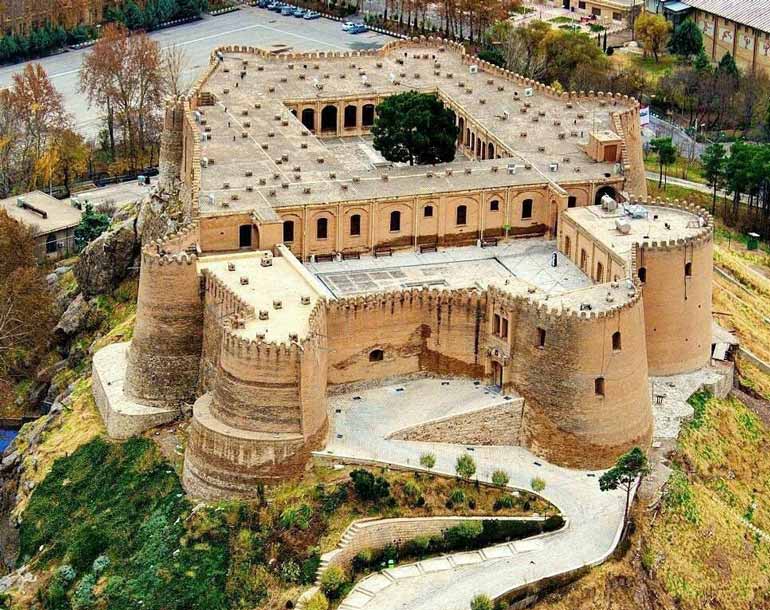
In various sections of the Ethnology Museum of Falak al-Aflak, models of the daily life of the people of Lorestan are prominently displayed in different halls, capturing the attention of visitors. Among these models are scenes from wedding ceremonies, mourning rituals, the creation of local handicrafts, hunting scenes, bread baking, and the activities of women in Lorestan. In the gallery of photos in this museum, a collection of historical and natural images of Lorestan is also showcased. Some of these photos date back to the Qajar period, depicting the life of Lorestan’s nomads and tribes between the years 1839 and 1840. The original versions of these photos are preserved in the Golestan Palace in Tehran.
One of the museum’s halls showcases sculptures of traditional Luristan craftsmen. A visit to this section illustrates the skills of Luristan’s masters in crafting traditional handcrafts. In the halls of indigenous textiles and nomads, models of Lur women intricately weaving carpets, jajim, and black tents are prominently displayed. However, one of the most beautiful sections of this museum is its music hall, which highlights the close connection of music with the people of this region. In this section, various traditional instruments of Lorestan, such as the sorna, karna, dozeleh, boor, and various percussion instruments of this region, such as the dahl and string instruments like the tanbur and kamancheh, are on public display. In the exhibition hall of the Falak al-Aflak Museum, you can also get a glimpse of the culture and history of Lorestan in a short film presentation.
If you have visited Falak al-Aflak Castle or are a resident of Khorramabad, share your experiences with us and other users of Gulf City Pedia.
Frequently Asked Questions:
Where is Falak al-Aflak Castle located?
Falak al-Aflak Castle is located in Lorestan Province, in the center of Khorramabad city, on Imam Khomeini Street, known as the 12-tower street.
Which historical period does Falak al-Aflak Castle date back to?
The construction of Falak al-Aflak Castle dates back to the Sassanian era during ancient Iran, but it underwent reconstruction and significant additions in later periods.
What are the secrets of Falak al-Aflak Castle?
The architectural design of Falak al-Aflak Castle, the presence of a deep well that still has water, and the method of well excavation in the past attract the attention of many archaeologists and architects today.
In which part of the castle is Falak al-Aflak Museum located?
Falak al-Aflak Museum is divided into two sections: Archaeology and Ethnology, and it is located inside Falak al-Aflak Castle.

